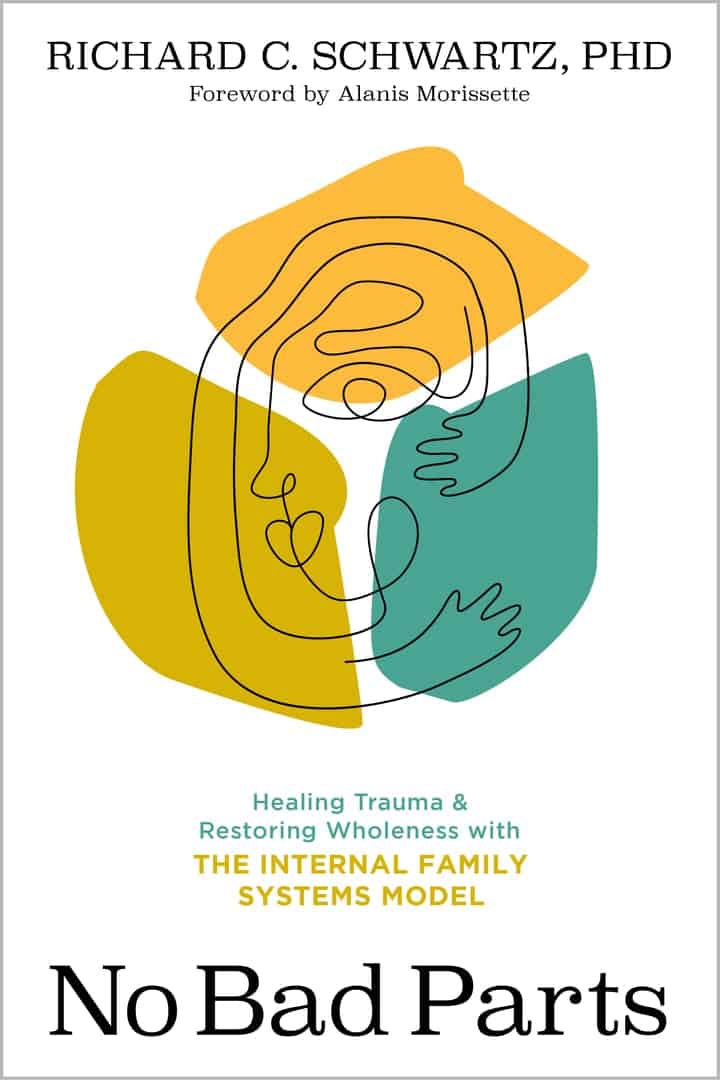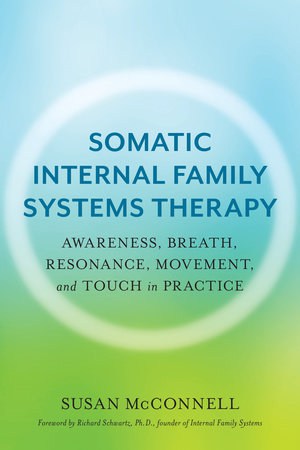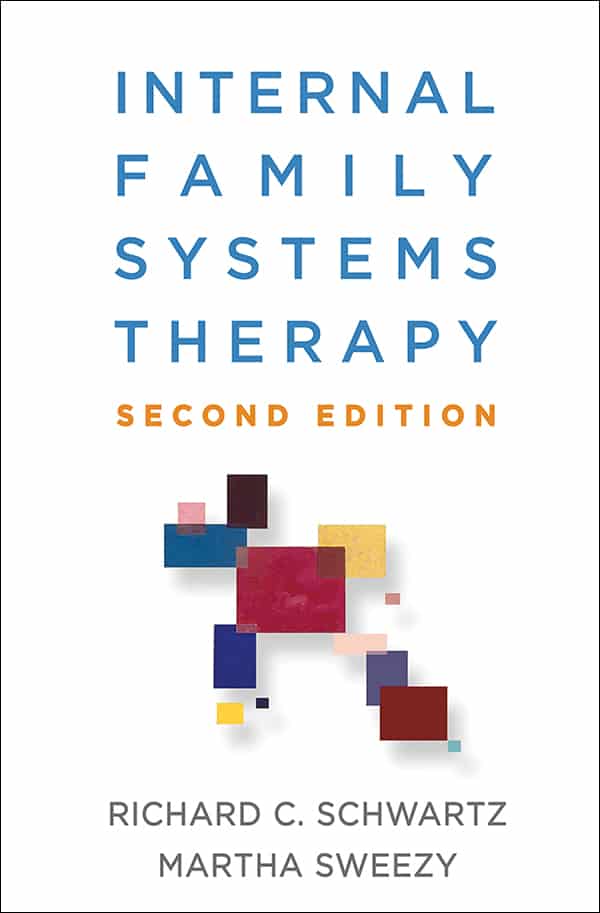Therapy
Internal Family Systems (IFS): What It Is, Background, and Benefits
THC Editorial Team January 28, 2022

Contents
- Overview
- What Is IFS?
- History/Background of IFS
- What Is Internal Family Systems (IFS) Therapy?
- How Does an IFS Session Work?
- Conditions Commonly Treated with IFS Therapy
- The Potential Benefits of Internal Family Systems Therapy
- The Effectiveness of IFS
- Summary/Outlook
Internal family systems (IFS) is a psychotherapeutic model through which people are viewed as having a core Self surrounded by multiple parts.1 IFS practitioners believe that by helping people learn to harness the power of their core Self, they can help their clients heal the wounded inner parts of themselves and become more connected both inwardly and outwardly.
What Is Internal Family Systems (IFS)?
Internal family systems (IFS) explains the phenomenon in which people feel as though part of themselves wants something and another part doesn’t. It brings together the ideas of the plural mind and systems thinking. Systems thinking stems from biology, where scientists consider a holistic view and take into account the relationships between a system’s parts and the larger context around the system.1
IFS operates under the view that individual people cannot be understood in isolation from their internal “families.” Every person is believed to possess multiple parts that take on different roles due to trauma or interactional patterns, which can at times obscure the Self or the core of one’s being. These parts make up the internal family system. They must be understood and engaged to facilitate complete healing of the Self.2
A person’s internal family system consists of the Self and three additional parts, or roles: the exiles, the managers, and the firefighters.1
The Self
The Self is the essence of who a person is, their whole and confident being. It is the seat of consciousness, characterized by peace, presence, and pure joy. The “eight Cs” are eight qualities that shine through when a person is in “Self-energy,” or a state in which the Self is in charge: calmness, clarity, curiosity, compassion, confidence, courage, creativity, and connectedness. Notably, the Self, not the therapist, is the agent of healing; the Self emulates openness and acceptance so that the manager and firefighter can relax their defenses and the Self can engage with the exiles.2
The Exiles
Exiles are the parts that have experienced exploitation, rejection, and abandonment.3 They can be the memories and emotions from traumatic events or behaviors discouraged in a person’s external systems.4 They then endure negative judgment from other system parts and are suppressed. They represent fear, shame, and emotional pain, leading the other parts to see them as defective, threatening, and weak. When not tended to and treated, exiles can grow more extreme and seek to break away from their suppression. Because exiles deeply crave redemption and acceptance, they will endure nearly anything to get it, often trapping people in toxic, abusive relationships.2
The Managers
Managers are in charge of suppressing the exiles; they do everything they can to ensure that the exiles will not escape. That can come in the form of a “thinker” or “controller,” which values intellectualism and practical problem solving but constantly ignores emotions. Sometimes the manager promotes career ambition and wealth in order to maintain power and distraction but is hypercritical and never satisfied. Another manager form is the “denier,” which avoids interpersonal risk, negative feedback, and any situations that could arouse unpleasant emotions. Regardless of the form they take, the managers keep the exiles away in order to maintain the person’s ability to function, and they are ruled by fear of the exiles.1
The Firefighters
The firefighters are the emergency protectors that step up to bat when the managerial guard is down and an exile surfaces. There is a hierarchy to firefighter tactics; if a less extreme tactic does not work, they will resort to a more extreme mechanism. Techniques can include binge eating, substance abuse, dissociation, narcissism, rage, and stealing—anything to numb the mind and wrestle control away from the exile.1
The History/Background of Internal Family Systems
The Internal family systems model was developed during the 1980s by Dr. Richard Schwartz, a family therapist.2 Based largely on his insights as a student working on an adolescent psychiatric unit, Schwartz believed that people could not change without addressing their environment, hence his dedication to family therapy.1
Schwartz thought that the relationship between an individual’s core Self and lesser parts could be changed through careful and respectful intervention. He viewed the individual’s mind as composed of an internal family with conflicts that could be addressed and resolved through therapy. He also believed that everyone has access to their inner Self and the strength and ability to heal. He developed IFS to teach people how to heal and integrate their separate and sometimes conflicting parts.5
What Is Internal Family Systems (IFS) Therapy?
Internal family systems therapy works to help clients identify the inner roots of conflict, manage symptoms that might arise, and achieve better connectedness and a greater sense of Self and well-being. IFS therapists work to identify and address a client’s multiple parts operating within their psychological system and how that system relates to other people and events. These parts can present as painful emotions, including shame or anger, and attempt to protect the client from pain.1,2 IFS therapy is non-pathologizing—parts are neither good nor bad.1
A person’s parts are often in conflict with one another and with the patient’s core Self. IFS therapy works to heal the wounded parts by showing them love to free the individual parts and restore trust in the Self. Once this is achieved, the Self can reinstate control and restore harmony, balance, and a sense of wholeness.1,2
How Does an Internal Family Systems Session Work?
The systems theory perspective underlying IFS maintains that people have an innate healing capacity. As such, IFS encourages Self-healing. In other words, it is the Self’s job to heal a client’s parts, not the therapist’s. The therapist can only aid and facilitate. In other psychotherapies, the therapist acts as a loving attachment figure for the client, but in IFS, the Self acts as that figure.1
When clients embark on their therapeutic journey, their protector parts (the firefighters) are usually on high alert. The therapist will listen to the client discuss their background and emotions and ask about the particular parts of the client that have made them feel particular ways. The therapist works to earn the skeptical protector parts’ trust gently. Therapists employ the five Ps to create safety for their clients:6
- Presence: The therapist’s presence should be steady, nonjudgmental, and accepting.
- Perspective: The therapist sees that a client’s symptoms and reactions are caused by those parts that have suffered pain.
- Patience: The therapist understands the protector parts’ resistance and gently earns their trust.
- Persistence: The therapist remains consistent even when the protectors are stubbornly skeptical.
- Playfulness: The therapist must provide enough safety that the client can exercise playfulness between the Self and parts.
As the client learns to separate their parts from their Self, the therapist helps them engage with each part to learn about them. This allows the specific part to express why it acts the way it does to protect the person from facing their exiles, those traumatic and difficult experiences. In understanding these parts and their well-intended motivations, the client naturally eschews their self-judgment and begins to accept the parts and show them love and appreciation.4 Rather than engaging with the parts themselves, the therapist encourages the Self to interact with the parts and report back to the therapist. This helps restore trust in the Self so that it can lead.1
Patience is imperative throughout the IFS process because the therapist must be “ecologically sensitive;” the Self must allay the protectors to heal the exiled parts. It cannot pressure the protectors to change; these parts need to feel understood, appreciated, and validated first. The Self can present the parts with the idea of liberation from their role as protector and of adopting new, preferred roles.1
Often parts are in conflict with one another, pushing them to polarizing positions. Parts believe that relaxing their hypervigilance will allow the others to take over. Whenever possible, the therapist invites the Self to mediate inner dialogues to bring the parts together in their shared goal—maintaining the client’s safety.1
IFS therapy often employs mindfulness meditation during and between sessions to help clients separate the parts. Mindfulness meditation promotes calm, joy, and gratitude, all qualities of the Self. This can help to remind the parts of the power of allowing the Self to lead.4
Conditions Commonly Treated with IFS Therapy
Many different mental health conditions can be treated with IFS therapy. This type of therapy can be used in individual counseling, couples counseling, and family counseling settings. Some of the conditions that might be treated with IFS therapy include:6
- substance abuse/dependency
- phobias
- anxiety
- depression
- emotional pain from abuse
- compulsive behaviors
- self-harm
- insomnia
- eating disorders
The Potential Benefits of IFS Therapy
People might realize several potential benefits from undergoing IFS therapy, including:
- increased feelings of calm7
- reduced anxiety7
- increased resilience7
- better problem solving7
- improved self-acceptance7
- a better understanding of others’ emotions7
- reduced symptoms of depression6
- improved self-awareness7
- improved relationships7
- increased ability to manage substance issues6
The Effectiveness of Internal Family Systems Therapy
Limited research has been conducted to determine the efficacy of IFS. That said, the available studies have demonstrated that it might be effective for treating people with depression, posttraumatic stress disorder (PTSD), and other conditions.
In a 2016 study, researchers from Colorado State University and the University of Minnesota used IFS therapy to treat female college students with moderate or severe depression. Thirty-seven women were randomly assigned to receive five to 16 sessions of either IFS therapy or one of two other approaches: cognitive behavioral therapy (CBT) or interpersonal psychotherapy (IPT). The researchers found that IFS therapy was just as effective as CBT and IPT in reducing the symptoms of depression, as measured by the Beck Depression Inventory.8
In another study published in 2013 in the Journal of Rheumatology, researchers compared the depression symptoms and experiences of pain between people with rheumatoid arthritis who received IFS therapy and those who received education about the condition and its symptoms. Thirty-nine patients were randomly assigned to the IFS treatment group, and 40 were assigned to the education group. Those who received IFS therapy reported a reduction in depression symptoms as measured by the Beck Depression Inventory and reported reduced pain compared to those who received only educational materials.5
In 2018, researchers, including a military veteran, argued that despite limited academic research, using IFS therapy might be effective for helping combat veterans deal with trauma and posttraumatic stress disorder, due to its “collaborative approach, less-pathologizing stance, and the simple language that will resonate with military populations.”9 They recommended that the United States Department of Veteran Affairs consider adding this intervention to their typical therapeutic approaches.9
In a 2020 study, researchers concluded that a single guided self-imagery intervention based on the internal family systems model could promote significant self-forgiveness which is associated with reduced stress.10
Summary/Outlook
Internal family systems therapy might help people who feel a sense of disconnection or conflict with themselves or others. This type of therapy might also allow people to understand themselves better and experience fewer symptoms of depression and other mental health conditions. Although limited research hinders widespread use of the treatment, it shows great potential to help a wide variety of people. Those interested in IFS therapy can look for therapists trained in this model; the IFS Institute’s directory is a helpful starting tool.
















